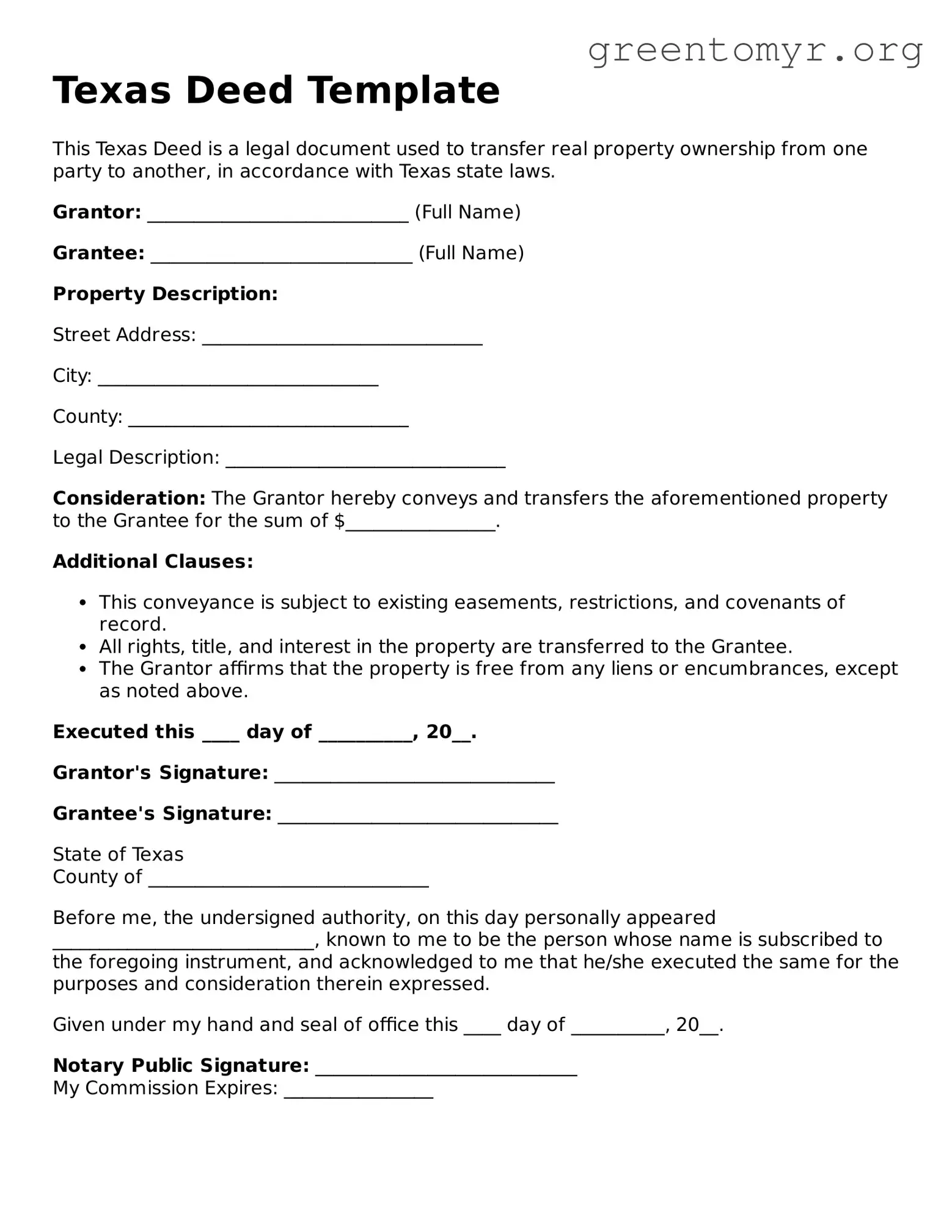Texas Deed Template
This Texas Deed is a legal document used to transfer real property ownership from one party to another, in accordance with Texas state laws.
Grantor: ____________________________ (Full Name)
Grantee: ____________________________ (Full Name)
Property Description:
Street Address: ______________________________
City: ______________________________
County: ______________________________
Legal Description: ______________________________
Consideration: The Grantor hereby conveys and transfers the aforementioned property to the Grantee for the sum of $________________.
Additional Clauses:
- This conveyance is subject to existing easements, restrictions, and covenants of record.
- All rights, title, and interest in the property are transferred to the Grantee.
- The Grantor affirms that the property is free from any liens or encumbrances, except as noted above.
Executed this ____ day of __________, 20__.
Grantor's Signature: ______________________________
Grantee's Signature: ______________________________
State of Texas
County of ______________________________
Before me, the undersigned authority, on this day personally appeared ____________________________, known to me to be the person whose name is subscribed to the foregoing instrument, and acknowledged to me that he/she executed the same for the purposes and consideration therein expressed.
Given under my hand and seal of office this ____ day of __________, 20__.
Notary Public Signature: ____________________________
My Commission Expires: ________________
